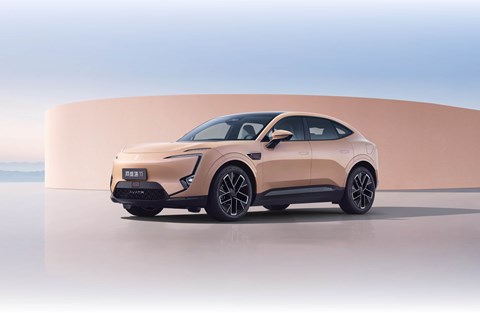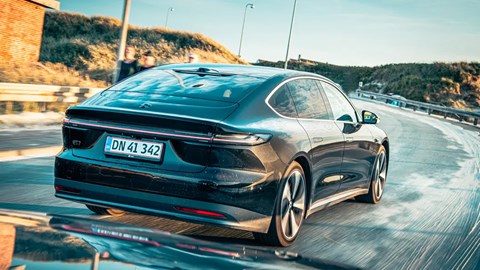► Status update: how is China doing?
► Chinese car brands under the microscope
► Leading just on price? Or on BEV tech, too?
Tesla is often perceived as the technology leader among electric car makers, but there’s a growing band of challengers for that crown. A look at five recent EVs from China reveals a wealth of smart thinking on batteries, chargers, assistance systems and more, combined with a focus on moving swiftly from drawing board to production line.
Just check out the so-called Golden Battery found in the new 007, a rival for the Tesla Model 3 from Zeekr, part of the Geely group. Zeekr claims to be the fastest-growing electric brand in the world.
Developed in house, the Golden Battery is a 75kWh prismatic LFP power pack capable (on the correct charger) of getting from 10 to 80 per cent charged in just 10 and a half minutes. That makes the 007 the fastest-charging mass-produced EV in the world, claims Zeekr. And Zeekr has been rolling out 1000kW ultra-fast chargers within China, so this isn’t purely academic.
The 007 has a range of 427 miles according to CLTC, the Chinese equivalent of WLTP and EPA ratings (if unlikely to translate to European and US conditions without losing a few miles); it can add over 300 miles of range inside 15 minutes. That’s ahead of any Tesla. With a dual-motor set-up producing 637bhp and 524lb ft, it’s also claimed to beat a Model 3 Performance on acceleration.
Moving on from Zeekr to another vowel-averse Chinese brand, Avatr, we find a rival for the Tesla Model S, the 12 (pronounced one-two). This is claimed to have class-leading autonomous driving technology, in the form of Huawei’s latest Qiankun 3.0 system.
Combined with no fewer than three lidar units on the 12, it makes the car capable of driving autonomously around urban roads in China as well as remote valet parking, where it’ll deliver your car to a set space in a parking lot without you being inside.
With Tesla’s latest Full Self Driving not available in China, it’s hard to give a direct comparison. But the Huawei/Avatr system has proved itself on China’s crowded and often chaotic roads, so it should at least go toe-to-toe with Tesla.

We’ve learned to never underestimate Tesla, but the Model S is starting to look dated now that some of the competition has moved on quite significantly. None more so than the newly refreshed Nio ET7, which will be heading to Europe in the near future.
Launched in 2022 and updated twice since then, the ET7 is the first Nio to benefit from the company’s push further upmarket, and now sports a Maybach-busting spec list in addition to Nio’s ground-breaking battery-swap technology.
While Tesla’s expansive Supercharger network has done a great job of spreading the convenience of reliable charging infrastructure over many territories, Nio has taken a different approach: an owner should be able to acquire a fully charged battery in around three minutes in a fully automated process.

Nio’s 2500-plus swap stations have completed more than 50 million battery changes since 2018. The network is very much focused on China at the moment – but when the cars come to the UK, so will battery-swap stations.
The best Nio currently offers is a semi-solid-state 150kWh battery, which boss William Li took on a livestreamed 621-mile drive earlier this year. The 100kWh battery in a Model S can’t quite manage 400 miles.
And there’s more. The Li Mega is an MPV, launched earlier this year, with bullet-train styling and some remarkable charging speeds for its 102.7kWh battery: a claimed 12 minutes from 10 to 80 per cent. With peak charging power of more than 520kW and a curve that never dips under 300kW, the Mega’s range between charges – 441 miles according to CLTC – is helped by a slippery drag coefficient of just 0.215.

Denza started out life as a joint venture between BYD and Mercedes-Benz. Poor sales and, frankly, poor products led Mercedes to dial its share down to 10 per cent. But of late the brand has flourished. Its flagship is the Z9 GT, with styling that echoes the Porsche Panamera. It’s available as pure EV or a range extender. It has rear wheels that can point in opposing directions, giving the ability to pivot the car around one of the front wheels; drive nose-first into a parallel parking space, then rotate the rear into position by selecting your chosen angle on the centre screen.
This also enables the Z9 to manoeuvre diagonally through tight spaces, and complete a conventional U-turn in just 4.62 metres. Smart. And, like all of these Chinese EVs, there’s also a long list of convenience and infotainment features on the Z9. It’s not unusual for these cars’ audio systems to feature 20-plus speakers, big screens for rear passengers, fridges, hot-stone massaging and plenty more.
Some of these cars will soon be available outside China, as will much of the tech. And even if not all the claims match up to the closest scrutiny, you can see why some Western manufacturers are sympathetic to the idea of imposing tariffs on Chinese cars…